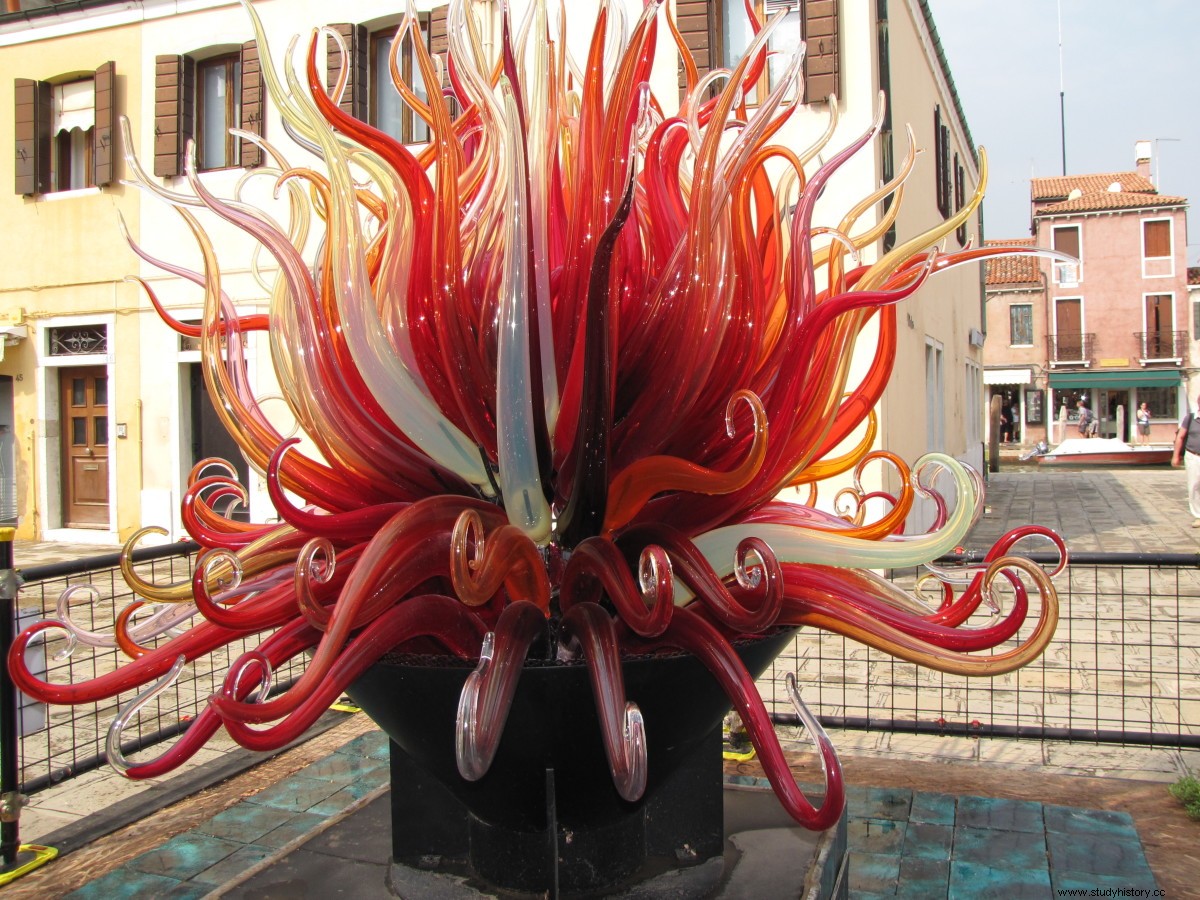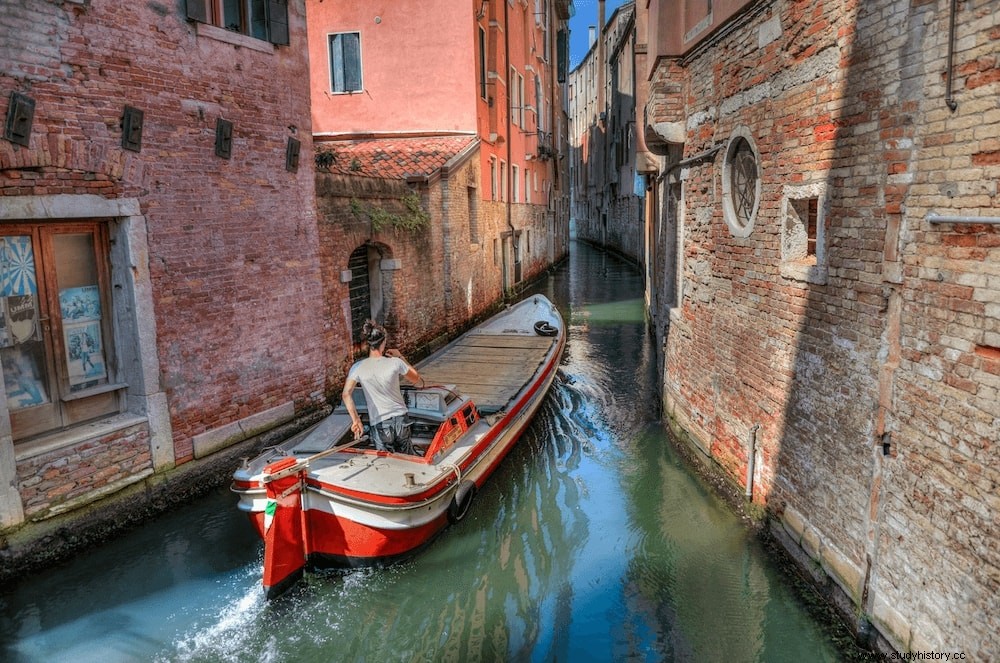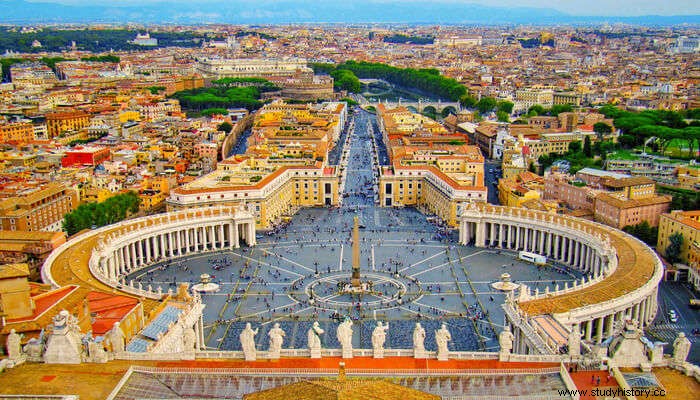The Republic of Venice, known as La Serenissima, was one of the most iconic and maritime countries. It left so many traces of the surrounding countries by the Mediterranean while it existed from 697 AD. to 1797 AD
The long period of influence took the many coastal towns of present-day Croatia, Slovenia, Montenegro, Greece, Albania and Cyprus under the government of the city of Venice. The Venetian language still survives.
Its influence was based on noble families and trading power. Located on the Adriatic Sea, it spread the empire comparable to the Roman Empire.
The most exquisite power of trade was salt. Since salt served as the most effective way of preserving food, it developed a high level of importance. The salt protected the food from bacteria and rot.
Salt was the natural product of the huge oasis by the sea, and it was even produced artificially. The salt was replaced by food and other products.
History of Venice
The city of Venice was established in 421 AD. of the Board of Padua, although there is no written evidence to that effect. The founding of the Chuch of Saint James is associated with the early days of the Venetian Republic.

German invasions were followed by the fall of the Roman Empire. Immigration of the Lombards was defined by the power of Ravenna. The Lombard invasions began in 568 AD, after which the most important Byzantine city of Oderzo fell to the Lombards. The Duchy of Venice or Dogado was formed, consisting of the city of Venice and adjacent cities from Loreo to Grado.
The Republic of Venice was divided into sea states and mainland territories. The city of Eraclea in the Venice Lagoon was the first siege of the first fugitives. The name comes from the founder, Heracles, who is given by Greek mythology. Eraclea is still one of the most important seaside resorts in the Venice region. It is known for its pine forest and spectacular natural formations made of sand or Lagoon of the Dead.
The role of Eraclea was replaced by Malamocco in the 740s. The Rioalto archipelago forms the heart of today's Venice, which was properly urbanized in the 9th century. The island of Olivolo or today's S.Pietro in Castello was one of the first inhabited places in the Rioalto group, which is connected by a bridge with the main islands of the group. The castle from the 6th century is an important part of the story.
The Frankish Empire ruled the divisions in Venice, balancing between the Pro-Byzantine and the self-proclaimed.
The slave trade was quite relevant at that time between Italy and North Africa.
The Carolingian Empire, in 804, became the next dominant force in Venice. Venice was officially recognized as Byzantine territory along with dynamic trade rights.
Early Middle Ages
Although formally united, Venice experienced the dominance of the Byzantines. The capital of Malamocco was replaced by an island in the Rivo Alto group near the church of Santi Apostoli. The urbanization of the Rivo Alto Islands began to take place along with the construction of bridges, canals, fortifications and significant stone buildings. Modern Venice is born.

The influential military force is the next step in the establishment of Venice. The trade in Christian slaves was interrupted by Pactum Lotharii, who continued another chain of slave trade. It included the massive trade from Eastern Europe. 60 guns joined the failed mission to transfer the Arabs from Crotone.
Istrian cities officially fell under Venetian rule. Narentine cities in southern Dalmatia were conquered by the Byzantine Empire while the Republic of Venice with its power in Dalmatia. Although it remained neutral, Venice was balanced between the Byzantine and Roman empires. The Republic of Venice was consequently exempted from taxes, resulting in increasing wealth.
High Middle Ages
These were the years of wealth and prosperity when trade became the center of the Republic of Venice. After expanding into the Adriatic, Venice tried to conquer the coastal cities of Syria with 200 ships.
Venice experienced trade privileges in the Byzantine Empire. Venice Arsenal was built in the 12th century as the large national yard. Nothing that can be related to today's gondola.

In the 12th century, the city of Zara (or Zadar in Croatia), in the virtual struggle for independence, decided to stay against Venetian rule. Thus it became under the rule of the papacy and Emeric, the king of Hungary. The separation from Hungary was followed by the Treaty of 1199.
14. century
Venetian power developed after the slow failure of the Byzantine Empire in the 12th century and the last fall of Constantinople in 1453. The Venetians occupied Constantinople as early as 1204, after the Fourth Crusade.
Crete eventually fell to Venice in 1204, forming the Kingdom of Candia, which lasted for 450 years.
At the end of the 14th century, Venice expanded over the adjacent Italian cities such as Mestre, Treviso or Bassano del Grappa.

After the war with the Genoese from 1350 to 1381. Venice eventually won, establishing its position in the eastern Mediterranean. Genoa bought Venice to lose some territories such as Treviso taken by the Carraresi family or Conegliano, which fell to Austria.
Further and most important expansion included the Dalmatian coast, which was concluded by the Treaty of Zara in 1358.
15. century
At the beginning of the 15th century, further expansion took place in northern Italy, which included Vicenza, Belluna, Padua, Verona and Este. The Dalmatian coast was defined by the prevailing Venetian identity that covered the streets and language. As for Istria, the Venetian authorities seized power, even though the cities of Pula, Koper and Izola opposed the Venetian government, but in vain.
Venice exploited the civil war in Hungary while King Ladislaus of Naples sold his rights to the Dalmatian cities. The navy of 3,300 ships took control of the newly installed Venetian cities, including Verona and Padua.
Venice experienced its golden years under Duke Francesco Foscari. Another war against Milan defined the independence of the cities of Milan, Florence, Bologna and Cremona. The Golden Ambrosian Republic was founded in Milan. The Peace of Lodi in 1454 established further borders between Milan and Venice. It confirmed that Bergamo and Brescia belonged to Venice.

After the fall of Constantinople, Venice retained some trade privileges. Venice formed a few alliances with Hungarian and Persian leaders who tried to occupy the Greek islands and Bulgaria.
After trying to conquer Ferrara, but was defeated, Venice won Gallipoli in Apulia in southern Italy. A few battles with Pope Innocent XVII and Austrian and French leaders resulted in the alliance with Spain.
17. century
The beginning of the 17th century defined the loss of economic power that belonged to the Republic of Venice. After the conflicts with the church, Venice experienced wars with the Ottoman Empire in the second half of the 17th century.
Meanwhile, turbulence in Spain caused a possible decline in Venice's dominance. Not only wars, the plague appeared in 1630, which caused the death of 50,000 XNUMX people in Venice. To celebrate the end of the plague and, note gratitude, the first stone church was built, called Santa Maria della Salute.

New wars in the second half of the 17th century included the one with the Ottoman Empire and the Cretan war that lasted for 25 years. Consequently, Venice lost Crete and other overseas territories while maintaining power in Dalmatia.
In the battle between the Turks on the fabulous Croatian coast of Dalmatia, Venice still retained its possessions. Sebenico took the special battle in which the Turks lost power. The Morean War, known as the Sixth Venice-Ottoman War, led to the defeat of Crete as they tried to win the Morea Peninsula in southern Greece.
Venice tried to maintain a strong alliance with France and Habsburg, and slowly experienced its decline.
Reject
With the last Turkish-Venetian war in December 1714, Venice finally lost power. Many Greek islands came under the Turks, among them Tinos, Aegina and the ancient city of Corinth. After trying to conquer Corfu, the Turks were defeated and Venice lost Morea.
The Tuscan port city of Livorno became Venice's new rival. Mighty Ancona and Trieste fell out of Venice's hands. Even the Venetian fleet lost the number since it was a small number by 1796, so further conquest had no value.

The Venetian assets in the Balkans were taken by Austria and France took Lombardy. The Venetian province was the last successor to the famous Mediterranean country formed by the Habsburg monarchy in 1797. It lasted only a few years.
Economic power in Venice
Trade and salt
The economic power of Venice was based on trade, which took its significance into the rather unusual element:salt. The salt was used to protect the food from bacteria, practically the only way to preserve it.

The natural wonder of the sea that surrounds Venice produced even more lagoons that were created artificially. Salt had the role of oil, making it a perfect substitute for food and other rare products.
Tax benefits and freedom of movement
Venice was a country built on trade that connected the Holy Roman Empire with the Eastern Roman Empire. Its privileged role was a response to the defensive actions of the Byzantine Empire against Arabs and Normans.
More than that, the tax benefits led to a huge increase in wealth. The trade in Venice included spices, perfumes, precious substances and glass. Spices that came from India created the top of Venice in the 15th century.

The Rialto Bridge was especially popular with German merchants, where life burst by itself. The testimony of German merchants in Venice builds the building named Fondaco dei Tedeschi, which displays typical German art.
Glass production flourished to a point where it was framed by a monopoly and even focused on just one island - the popular Murano. Murano was not only the perfect craftsman of glass, but the rich world of the small island.
Sustainability and environmental protection
Serenissima's sustainability and financial success are the result of a deep planning strategy.
Venice's environmental focus was based on the natural relationship between man and the sea. Two conflicting elements of land and water created the delicate balance between ecological life. Canal construction played an important role in the natural exchange of water and economic success.

Many rivers that created the lagoon in Venice resulted in muddy water. It was a serious threat to the existence and trade of Serenissima. Since 1336, artificial canals have cleared the area to the Venetian lagoon. In this way, Venice's trade became safer and the area clearer.
The power of independence
Independence and sustainability were the core values that kept Venice alive for 11 centuries. Even strong conflicts could not stop the constant desire for the legendary flourishing. Respect for the Vatican City State and rebellion by many Italian states against Venice's power only increased its position.

Cultural significance in anthropology
The mighty Mediterranean spirit sought a way to lay its roots outside the elegant city of Venice, to disperse the dust from the authentic rhythm. The illusion of romantic waterways reveals the secrets of artistic channels.
Although it is quite amazing how many wars the Republic of Venice has waged, self-independence and constant growth expressed the influence that colors even today's life, especially in Croatia. La Serenissima has an impact on almost invisible economic products and traffic. Salt has become like gold, the most natural ingredient with the most effective stories.
The way the economy of Venice has changed today shows how history and tourism have become the only significant lifestyle. Production became the source of its power, Venice established the principles that govern economic wisdom.
Venice is a model where "the world out of a box" can be an effective pedagogical motivation, where learning to live in the moment becomes power. Not relying on the past defines creativity that must be discovered not only collectively but individually.
Venice became an example of how to put a personal touch on the economic situation and how to dominate it.
Fantastic fact that foreign merchants could act freely as locals, opened the doors to economic prosperity and made the country so unique. The perfect geographical position between Eastern and Western Europe, even in the Middle East, enabled a constant flow of dynamic movement. In that movement lies the key to Venice's prosperity.
The fact that Venice was not always so elegant and rich in palaces, spreads the inspiring journey of self-discovery.
Glass production expresses the rare local production, although book production and sugar plantation pave the way for authentic creativity. Trade is what established the unique world of the Republic of Venice, the world that still sleeps undiscovered. Venice deserves to be discovered in its right light and unique message to the world.
